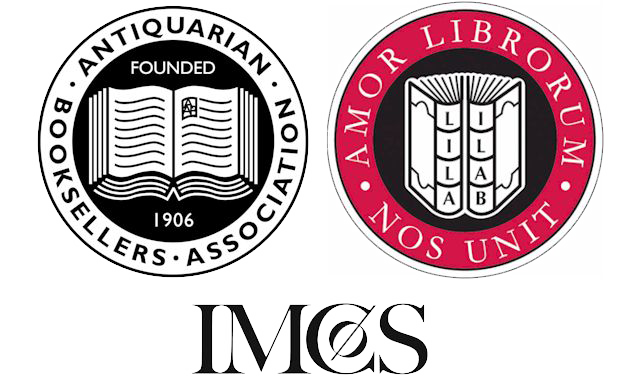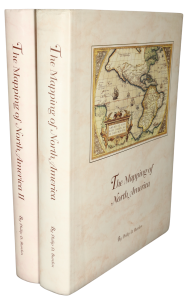Rare Maps and Prints
- World & Celestial
- North America
- West Indies, South & Central America
- British Isles
- British Isles
- English counties
- Large-scale
- Bedfordshire
- Berkshire
- Buckinghamshire
- Cambridgeshire
- Cheshire
- Cornwall
- Cumberland
- Derbyshire
- Devon
- Dorset
- Durham
- Essex
- Gloucestershire
- Hampshire
- Herefordshire
- Hertfordshire
- Huntingdonshire
- Islands
- Kent
- Lancashire
- Leicestershire
- Lincolnshire
- Middlesex
- Norfolk
- Northamptonshire
- Northumberland
- Nottinghamshire
- Oxfordshire
- Rutland
- Shropshire
- Somerset
- Staffordshire
- Suffolk
- Surrey
- Sussex
- Warwickshire
- Westmoreland
- Wiltshire
- Worcestershire
- Yorkshire
- Wales
- Scotland
- Ireland
- Western Europe
- Eastern Europe
- Middle East
- Africa
- Asia
- Australasia & Pacific
- Decorative Prints
- Title Pages
Mr. Philip D. Burden
P.O. Box 863,
Chalfont St. Giles, Bucks HP6 9HD,
UNITED KINGDOM
Tel: +44 (0) 1494 76 33 13
Email: enquiries@caburden.com
This is the second and preferred edition of the Mercator-Hondius atlas in English. Wye Saltonstall intended to include in his first edition of the ‘Historia Mundi’ in 1635 a map of Virginia. “In acquiring the Mercator-Hondius copperplates used first in the ‘Atlas Minor’ of 1607, he only possessed one of Virginia and Florida, which covers the area south of Chesapeake Bay. Since that time the Jamestown colony had become important, and a map would be needed to illustrate it. Unfortunately one was not ready in time, so at the end of the errata can be found “In Page 905 for the Description of Nevv Spaine read Nevv Virginia, but there is no Map of Virginia in regard where is a more exact Map drawing in that Country whose Platforme is not yet come over, but when it comes, every buyer of the Booke shall have it given him gratis.” By ‘Nevv Virginia’ he is referring to the Jamestown settlements as an earlier chapter in the book describes Raleigh’s Virginia.
“Despite the claim in the errata, the map does not appear to have been drawn in Virginia as it is largely drawn from John Smith’s map of Virginia, 1612. It is, in fact, the first English derivative of this landmark map. Ralph Hall, the engraver, appears not to have taken great care to accurately portray the Smith delineation as many placenames are completely removed from their location on the original. He even went as far as naming ‘Hall=poynt’ in the middle of the map after himself; this occurs on no other of the period. For the adornments Hall looked elsewhere and drew on John White’s drawings as published by Theodore de Bry. Across the map he placed Indians, birds, trees and various animals, including one, a type of leopard, which in straddling a river curiously loses part of its torso. The map was included in future editions of the Historia Mundi in 1637 and 1639. However, it is rare, lacking in many examples; a fate that has befallen many desirable maps” (Burden 244).
Most but not all of the maps are printed from the plates of the ‘Atlas Minor’ of 1607, which came into the hands of London printers some time after 1621. Shirley notes that an extra forty five plates were engraved for this English edition, some of these are by Pieter van den Keere. Provenance: Sotheby’s 14 July 1970 lot 337 £1,650 to Charles Traylen, Guildford, for Lord Wardington. Burden no. 244; Koeman (1967) vol. 2, p. 549; Morrison (1983) no. 9; Shirley, British Library T.HON 1f; STC 17824; Verner (1968) pp. 136-47 & 167.
“Despite the claim in the errata, the map does not appear to have been drawn in Virginia as it is largely drawn from John Smith’s map of Virginia, 1612. It is, in fact, the first English derivative of this landmark map. Ralph Hall, the engraver, appears not to have taken great care to accurately portray the Smith delineation as many placenames are completely removed from their location on the original. He even went as far as naming ‘Hall=poynt’ in the middle of the map after himself; this occurs on no other of the period. For the adornments Hall looked elsewhere and drew on John White’s drawings as published by Theodore de Bry. Across the map he placed Indians, birds, trees and various animals, including one, a type of leopard, which in straddling a river curiously loses part of its torso. The map was included in future editions of the Historia Mundi in 1637 and 1639. However, it is rare, lacking in many examples; a fate that has befallen many desirable maps” (Burden 244).
Most but not all of the maps are printed from the plates of the ‘Atlas Minor’ of 1607, which came into the hands of London printers some time after 1621. Shirley notes that an extra forty five plates were engraved for this English edition, some of these are by Pieter van den Keere. Provenance: Sotheby’s 14 July 1970 lot 337 £1,650 to Charles Traylen, Guildford, for Lord Wardington. Burden no. 244; Koeman (1967) vol. 2, p. 549; Morrison (1983) no. 9; Shirley, British Library T.HON 1f; STC 17824; Verner (1968) pp. 136-47 & 167.
MERCATOR, Geradus
Historia Mundi: Or Mercator's Atlas. Containing His Cosmographical Description of the Fabricke and Figure of the World... Englished by W[ye] S[altonstall]
T. Cotes, for Michael Sparke and Samuel Cartwright, London, 1637
Folio (292 x 190 mm.), contemporary calf, rebacked with later Pease crests gilt, light wear. Additional engraved allegorical title, with letterpress ‘Meaning of the Frontispiece’ leaf facing, 183 engraved maps, the map of Virginia pasted over a map of New Spain, map of Egypt also pasted on, minor dampstaining, mostly marginal, first two leaves remargined at foot, Y6 with rust hole in text, a few maps shaved. The pagination of the present example is erratic, jumping from 401 to 409 and 566 to 649. However, it appears complete.
Stock number: 7113
SOLD








